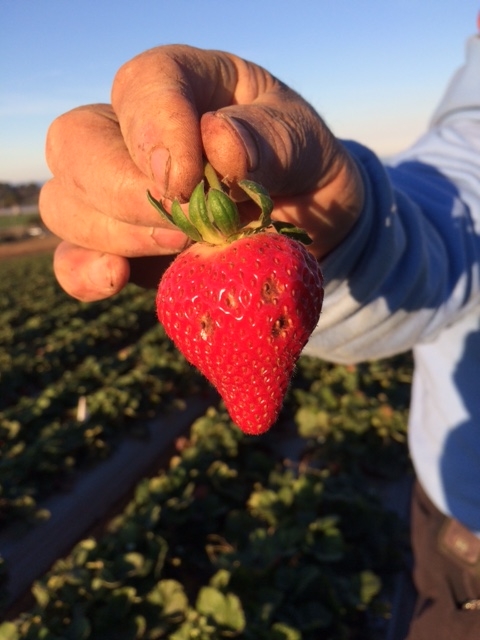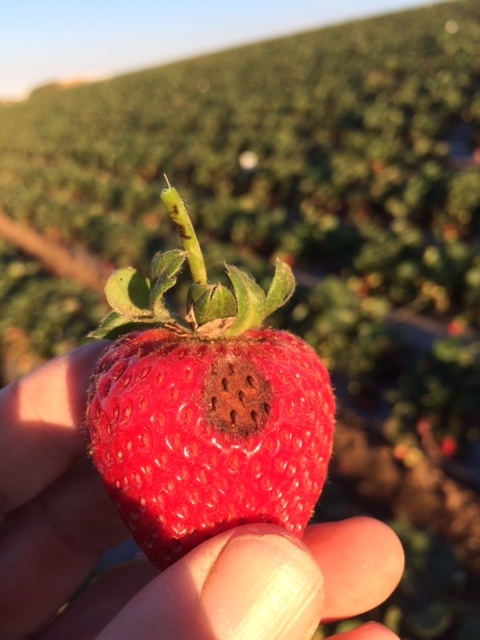
Posts Tagged: anthracnose
Defoliated Sycamore Trees?
Have you been seeing a lot of defoliated sycamore trees recently? Sparse foliage and early leaf...
Anthracnose Pest Note Updated
Anthracnose is a group of fungal diseases that infect many trees and shrubs, causing dark lesions...
New Grower Guidelines for Anthracnose on Strawberry Now Available
Attached is the latest iteration of the grower guidelines a number of us at UC Cooperative Extension have written and have had published by the California Strawberry Commission.
Super timely since planting is right around the corner, this piece on anthracnose in strawberry caused by the pathogen Colletotrichum , was written by myself, Steven Koike and Oleg Daugovish. It was then reviewed by our strawberry science colleagues Gerald Holmes, Kelly Ivors and Jenny Broome. Translation into Spanish (attached below) done by the Commission's Ariel Zajdband into pitch perfect Spanish in a single hour. The Commission's Joy Jacobs kept the project moving and she and Mercy Olmstead brought it over the finish line.
I'm really very proud of this team effort to put the latest settled science on a serious disease into the hands of growers, PCA's and industry people. I am privileged to work with such a great team of people!
Anthracnose of Strawberry September 2017
Anthracnose of Strawberry September 2017 Spanish
What's All This Now?
This is interesting. In the midst of all this heat and dry I found a big run of anthracnose infected fruit, and the grower shared with me that something like 5 to 10% of his crop has the disease currently. For those who think the grower or I might be confused about this, have a look at the pictures below taken Monday early morning.
So what I did was contact Steve Koike and ask him, that seemed like a smart thing to do. He answered and said that at some point there must have been enough moisture to activate the spores. It does boil down to the "disease triangle" and each of the three requirements must be in place. We have the host (strawberries), the pathogen (Colletotrichum) and now all we need to do is have the right condition (a lot of moisture). Checking around with other growers in that area, it does seem that very close to the coast the dews over the past week were really heavy, in one case so much that one manager had to delay a spray. So the third requirement has been fulfilled after all.
Since I was able to surveil a number of fields in both Santa Cruz and Monterey counties these past few days on a soil sampling run, I found that sure enough even a little further inland the disease to is nowhere to be found. It truly does depend on the right conditions.

Not the most encouraging thing to see at first light on the farm - a berry spotted with anthracnose.

Better example of anthracnose on strawberry in the autumn of 2017.
Management of Anthracnose with Pre-Plant Fungicide Dip Treatments in 2016
Very nice presentation of management with pre-plant fungicidal dips of anthracnose given by Gerald Holmes of CalPoly of work he did together with Jim Adaskaveg, Doug Gubler, Stacy Haack, Helga Foerster and Kelly Ivors did earlier this year.
Look at the presentation, it's very well done. The upshot (copied directly from the concluding slide) is as follows:
1. Actinovate had NO efficacy on anthracnose in the conditions of this study.
2. Azoxystrobin (Abound) is highly effective in controlling Colletotrichum if the strain is sensitive, but not effective if the strain is resistant.
3. Switch is highly effective as a dip in controlling Colletotrichum in all the cases of this study. No phytotoxicity was detected in the conditions of this study (ie 4 minute dip with agitation, followed by 5 to 10 minutes drip drain).
4. Two new compounds, EXP-13 and Syngenta-2 (not registered yet) were found with high efficacy.
Link here:
http://content-calpoly-edu.s3.amazonaws.com/strawberry/1/documents/2016AnthracnoseUCR.pdf
